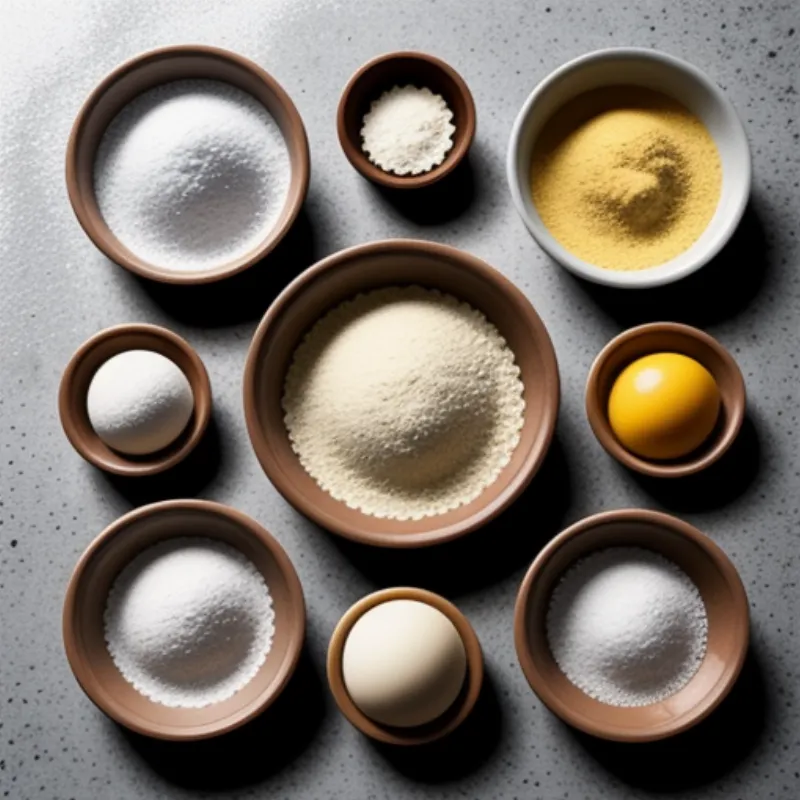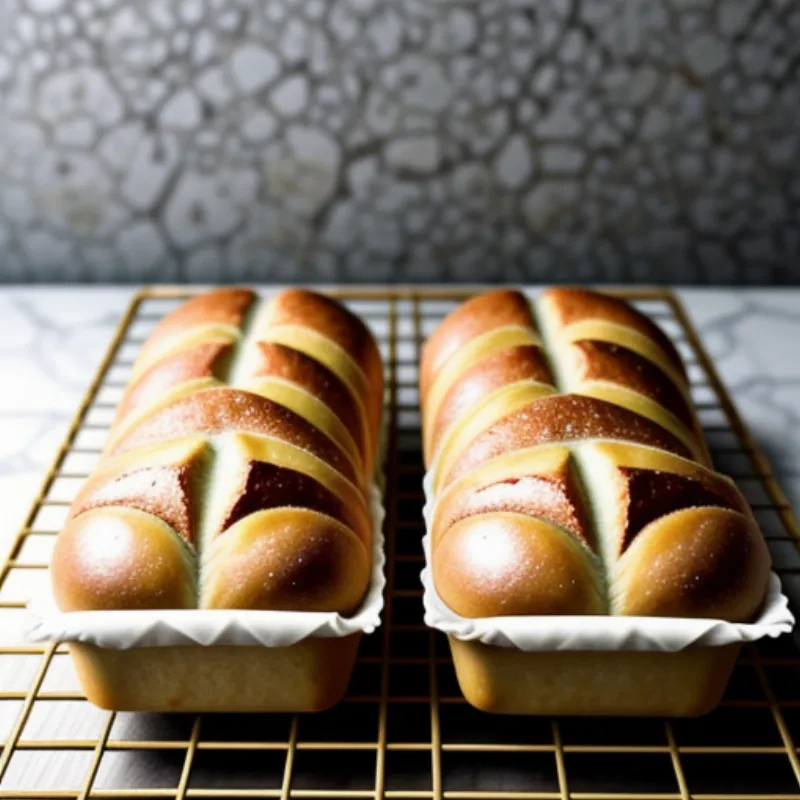Cozonac, the star of Romanian festive tables, is a rich, sweet bread that embodies warmth, tradition, and celebration. Imagine a fluffy, golden loaf generously filled with cocoa, walnuts, and Turkish delight, perfuming your home with the sweet aroma of vanilla and orange zest. This Easter, impress your loved ones with a homemade Cozonac that tastes even better than it looks. Follow our foolproof recipe and step-by-step guide to baking a Cozonac that will have everyone asking for seconds (and thirds!).
Cozonac Ingredients: A Symphony of Flavors
The secret to a delicious Cozonac lies in the quality of its ingredients. We recommend using fresh, high-quality ingredients whenever possible. Here’s what you’ll need:
For the Dough:
- 1 kg all-purpose flour, plus extra for dusting
- 500 ml warm milk (around 110°F/43°C)
- 200 g granulated sugar
- 4 large eggs, at room temperature
- 200 g unsalted butter, melted and cooled
- 50 g fresh yeast or 20 g active dry yeast
- 1 teaspoon salt
- 1 teaspoon vanilla extract
- Zest of 1 orange
- Zest of 1 lemon
For the Filling:
- 400 g walnuts, finely ground
- 200 g granulated sugar
- 100 g cocoa powder
- 200 ml warm milk
- 1 teaspoon rum extract (optional)
- 150 g Turkish delight, diced
- 1 egg yolk, beaten with 1 tablespoon of milk, for brushing
 Cozonac Ingredients
Cozonac Ingredients
Essential Cozonac Baking Tools
Before we begin, gather the following tools to make your Cozonac journey smoother:
- Two large mixing bowls
- One small bowl for activating the yeast (if using active dry yeast)
- Stand mixer fitted with the dough hook attachment (optional, but recommended for larger batches)
- Plastic wrap or a clean kitchen towel
- Rolling pin
- Two loaf pans (9×5 inch)
- Pastry brush
Step-by-Step Guide to Baking Cozonac
Ready to embark on this delicious adventure? Let’s dive into the step-by-step process of making a traditional Romanian Cozonac:
1. Preparing the Yeast: Awakening the Magic
- Active Dry Yeast: In a small bowl, combine the warm milk (110°F/43°C), 1 tablespoon of sugar from the recipe, and the active dry yeast. Stir gently and let it sit for 5-10 minutes until foamy. This means the yeast is active and ready to work its magic.
- Fresh Yeast: If using fresh yeast, crumble it into the warm milk in a large bowl and stir until dissolved.
2. Creating the Cozonac Dough: A Labor of Love
- Combining the Ingredients: To the activated yeast mixture (or the bowl with dissolved fresh yeast), add the remaining sugar, eggs, melted butter, salt, vanilla extract, and citrus zests. Mix well using a whisk.
- Incorporating the Flour: Gradually add the flour to the wet ingredients, mixing with a wooden spoon or spatula until it forms a shaggy dough.
Pro Tip: For an extra-fluffy Cozonac, sift the flour before adding it to the wet ingredients.
- Kneading the Dough: Turn the dough out onto a lightly floured surface and knead for 10-15 minutes until it becomes smooth and elastic. If using a stand mixer, knead with the dough hook attachment on medium speed for 8-10 minutes.
Did you know? Kneading develops the gluten in the flour, which gives Cozonac its characteristic chewiness.
- First Rise: Place the dough in a lightly greased bowl, cover it with plastic wrap or a clean kitchen towel, and let it rise in a warm place for 1-2 hours, or until doubled in size.
 Kneading Cozonac Dough
Kneading Cozonac Dough
3. Preparing the Cozonac Filling: A Symphony of Flavors
While the dough is rising, prepare the filling:
- Combining the Ingredients: In a saucepan, combine the ground walnuts, sugar, cocoa powder, and warm milk. Cook over medium heat, stirring constantly, until the mixture thickens. Remove from heat and stir in the rum extract, if using. Let it cool completely before adding the Turkish delight.
Pro Tip: You can adjust the sweetness of the filling to your liking. Add more sugar if you prefer a sweeter filling, or less if you prefer it less sweet.
4. Assembling the Cozonac: The Art of Layering
- Dividing and Rolling: Punch down the risen dough and divide it into two equal portions. On a lightly floured surface, roll out each portion into a rectangle (approximately 12×18 inches).
- Adding the Filling: Spread half of the cooled walnut filling evenly over each rectangle, leaving a small border around the edges. Sprinkle the diced Turkish delight evenly over the filling.
- Rolling and Shaping: Starting from the longer side, carefully roll each rectangle into a tight log. Pinch the seams to seal them well.
5. Baking the Cozonac: The Final Act
- Second Rise: Place the rolls seam-down in the prepared loaf pans. Cover loosely with plastic wrap or a clean kitchen towel and let them rise in a warm place for another 30-45 minutes, or until almost doubled in size.
- Preheating and Baking: Preheat your oven to 350°F (180°C).
- Golden Perfection: Brush the tops of the risen Cozonac loaves with the egg yolk and milk mixture. This will give them a beautiful golden-brown crust.
- Baking Time: Bake for 45-55 minutes, or until a wooden skewer inserted into the center comes out clean. If the Cozonac starts to brown too quickly, loosely tent it with aluminum foil to prevent burning.
6. Cooling and Serving: Savoring the Moment
- Cooling the Cozonac: Once baked, remove the Cozonac loaves from the oven and let them cool in the pans for 10-15 minutes before transferring them to a wire rack to cool completely.
- Slicing and Serving: Slice the Cozonac into generous portions and serve it warm or at room temperature.
Pro Tip: Cozonac is delicious on its own, but you can also serve it with a dollop of sour cream, fruit preserves, or a cup of coffee or tea.
 Baked Cozonac
Baked Cozonac
Cozonac FAQs: Your Questions Answered
Q: Can I freeze Cozonac?
A: Absolutely! Cozonac freezes beautifully. Wrap it tightly in plastic wrap and aluminum foil and freeze for up to 3 months. Thaw it overnight in the refrigerator and warm it up slightly in a preheated oven before serving.
Q: My Cozonac dough isn’t rising. What could be the problem?
A: Several factors can affect yeast activity. Make sure your yeast isn’t expired, the milk is warm (not hot), and you’ve created a warm environment for the dough to rise. “Sometimes even the smallest detail can make a big difference in baking,” shares renowned baking expert, Maria Popescu. “Double-check your yeast expiration date and make sure your kitchen isn’t too cold.”
Q: Can I make Cozonac without a stand mixer?
A: Yes, you can! Kneading by hand requires a bit more effort but is definitely achievable. Just be prepared for a good arm workout.
Conclusion: Enjoy the Fruits of Your Labor
Baking Cozonac is a labor of love, but the reward is well worth the effort. With this detailed guide and a sprinkle of patience, you’ll be baking like a pro in no time. Share the warmth of tradition and the joy of homemade goodness with your loved ones this Easter. Happy baking!
Don’t forget to share your beautiful Cozonac creations and baking experiences with us in the comments below. We love hearing from our readers! For more delicious recipes and baking inspiration, explore the world of “Family Cuisine.”
